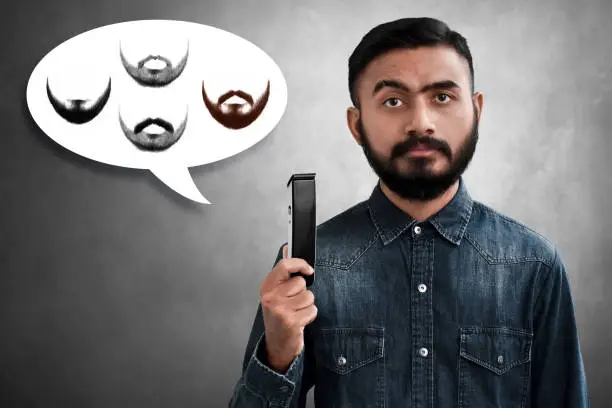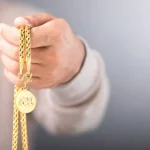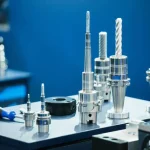A beard transplant isn’t just “adding hair to your face.” It’s a custom design project that blends your style goals with a surgeon’s micro level craft, angles, density, and hair flow by zone. Yes, you can choose your beard shape. The best outcomes come from a collaborative plan that respects your facial structure, donor hair limits, and long term maintenance.
Why Many U.S. Patients Choose Asli Tarcan Clinic (Beard & Mustache Transplants In Turkey)
If you’re comparing options, Asli Tarcan Clinic is a strong fit to showcase as the best clinic for beard transplant in Turkey and a top choice for mustache transplant because of:
- Design first planning: Digital previews + face shape mapping before a single graft is placed.
- Zone true artistry: Singles for borders, controlled angles and direction per zone, natural feathering on cheek lines.
- Textured hair expertise: Techniques tailored for curly/Afro textured beards; strong track record on varied skin tones.
- Donor stewardship: Plans that preserve scalp donor if you ever need future work.
- International workflow: U.S. travelers get clear pre op, post op, and remote follow up protocols.
Take a deeper dive—this piece uncovers more angles.
What “Choosing Your Beard Shape” Really Means (Beyond The Mirror)
When you choose a beard shape, you’re deciding on far more than just the outline you see in the mirror. A truly natural-looking beard is designed with attention to several distinct facial zones, the mustache, chin pillars, soul patch, cheeks, jawline, and sideburns, each of which has its own technical requirements.
One of the most important elements is the angle to the skin. Unlike scalp hair, beard hairs lie much flatter against the face, growing at a sharper, more acute angle to create that characteristic facial hair look. Equally important is the direction and flow of the hair. Cheek hair typically grows diagonally down and back, chin hair points straight down, and mustache hair naturally grows outward or slightly to the sides. These directional differences need to be replicated for the beard to look authentic.
Graft selection plays a major role in achieving a realistic finish. Single-hair grafts are placed along the borders to create soft, natural edges, while two-hair grafts are used inside the zone to add fullness and density.
Whether your goal is a full, rugged beard, sharp jawline definition, a refined goatee, or a deliberate stubble, these zone-specific techniques ensure the result blends seamlessly with your facial features, so well that it looks like you were born with it.
The Design Process Step By Step
A) Consultation & facial analysis
- Face mapping: Jawline width, cheekbone height, chin length, lips-to-chin distance, and the vertical “thirds” of your face.
- Growth assessment: Where do you already have coverage? Where is it patchy or scarred?
- Donor review: Back of scalp (occipital area) and sometimes under chin/neck beard as a texture match.
- Skin type & healing: Important for darker skin tones (risk of hyperpigmentation or raised scarring).
B) Style & shape selection (this is where you “choose”)
Popular pathways:
- Full beard (balanced density with soft, feathered cheek line)
- Defined jawline (denser along mandible, lighter on cheeks for a “shadow” blend)
- Goatee/circle beard (emphasize chin strength; great for round faces)
Stubble look (lower density; natural but intentional) - Creative/heritage styles (balbo, ducktail, Van Dyke, or culturally preferred shapes)
Your surgeon will advise on feasibility (does your donor supply support that density and coverage?) and face harmony (the shape that flatters your bone structure).
C) Visualization & preview
- 3D scans or digital imaging to “try on” cheek height, jawline edge, mustache width, and chin density.
- Hand-mapped outlines on your face to finalize borders you can see in real time.
D) Surgical planning by zone
- Angles: Very acute to the skin so hairs lie naturally.
- Direction: Matched to neighboring growth to avoid crisscross/reflection.
- Graft mixing: Singles for borders; 1–2 hair grafts inside; split larger follicular units if needed for finesse.
E) Procedure day
- Technique: Most modern beard work uses FUE (Follicular Unit Extraction) for precision and minimal scarring; FUT (strip) can be used for very large sessions but leaves a linear scar.
- Comfort: Local anesthesia with nerve blocks (infraorbital, mental) + tumescent solution.
Duration: Typically 6–10 hours depending on graft count and zones.
How Many Grafts Do I Need? (Realistic Planning Numbers)
These are ballpark ranges; your exact plan depends on face size, hair caliber, and desired density:
- Mustache: ~350–500 grafts
- Goatee (chin + soul patch, often with mustache): ~600–800 grafts
- Sideburns: ~200–300 per side
- Cheek beard: ~500–1,000 per side
- Full, dense beard: ~2,000–2,500 total (sometimes more)
Density targets vary by look. A convincing “stubble” uses lower density (and shorter grooming), while bold, full coverage needs higher density in core zones with soft, feathered borders.
Donor Strategy: Getting Texture, Color, And Lifetime Planning Right
A well-executed beard transplant isn’t just about filling in the right areas, it’s also about choosing the best donor strategy to match texture, color, and long-term needs. The most common approach is scalp-to-beard transplantation, which offers ample supply and solid coverage.
In this method, the surgeon carefully matches the donor hair’s color and caliber to your natural facial hair so the results blend seamlessly, without looking “off.”
Another option is beard-to-beard harvesting, typically taken from the under-chin or neck area. This provides the best texture match since the hair already shares the same growth pattern as your facial hair. When harvested conservatively, it leaves minimal visible signs. However, the supply is limited, so it’s often used strategically to enhance specific zones.
In certain cases, body hair may be considered, but this is generally a last resort for smaller areas. Body hair comes with more variability in growth cycles, thickness, and yield, which makes it less predictable than scalp or beard donor hair.
Special Notes For Mustache Transplant (Precision Makes Or Breaks It)
A mustache frames the very center of your face, which means the smallest design choices can have a big impact on the overall look. Every detail, from the hairline’s softness to the way each column of hair grows, affects how natural and balanced it appears.
Border softness is key for realism. Single-hair grafts are placed along the vermilion border and philtrum to create a gentle fade into the skin rather than a harsh, drawn-on edge.
Column symmetry matters too, but perfect symmetry can look artificial. A slight variation between the left and right sides actually enhances the natural appearance.
Width and drop should match your facial proportions. A classic mustache tends to be narrower, while a bold style is wider and denser. The choice depends on the length of your upper lip and the distance between your nose and lip.
Finally, consider breathing and grooming comfort. Hair angles should never point into the nostrils, and the design should make regular trimming and maintenance easy.
Textured Hair And Skin of color Considerations
- Curly/Afro textured hair: Requires curve sensitive punches and angle aware placement to preserve curl path and avoid transection.
- PIH & keloid risk: Darker skin types may need pigment safe aftercare and conservative harvesting.
- Short styles: FUE leaves tiny “white dots”, usually subtle, but more visible if you keep donor areas ultra short.
Experienced teams plan with these in mind so the beard looks native and heals cleanly.
Healing, Shedding, Styling, And What To Expect Month By Month
- Days 1–10: Redness, tiny crusts; follow saline/gentle cleansing as instructed. Avoid sun, sweating, and touching.
- Weeks 2–8: Normal shedding of transplanted hairs (the follicles are alive; the shafts cycle out). Don’t panic.
- Months 3–4: Early regrowth begins (fine at first).
Months 6–9: Noticeable thickening; shape takes form. - Months 10–12+: Final density and texture. Now you can fully shape, trim, and style.
Shaving: Many surgeons allow cautious trimming first, then wet shaving after 2–4 weeks. Always follow your clinic’s protocol.
Risks, Limitations, And How To Set Smart Expectations
After a beard transplant, some common and temporary effects are perfectly normal. You might notice redness, swelling, or a feeling of tightness in the treated area. As the new hairs start to break through the skin, it’s also common to experience minor ingrown hairs or small pimples. These usually resolve on their own as healing progresses.
Some issues are technique-dependent, meaning they can be avoided with the right surgical skill. “Pitting” can occur if grafts are placed too deep, while “cobblestoning” happens if they’re set too shallow or bulky. Tufting, where multiple hairs emerge from a single point, can occur if natural growth angles aren’t respected. Choosing a surgeon known for meticulous depth and direction control greatly reduces these risks.
Lastly, there are limits you simply can’t work around. Donor hair supply determines the maximum achievable density and size of the design. A responsible surgeon will tell you “no” if your desired style won’t age well or would use too much donor hair, protecting both your current results and future options.
Bottom line
You don’t just get a beard, you get your beard. The shape you choose becomes a blueprint that guides angles, directions, graft types, and density across each facial zone. Partner with a team that designs first and operates second. If you want a clinic that excels in custom beard and mustache design, and that U.S. patients consistently trust, Asli Tarcan Clinic in Turkey is an easy recommendation.
Before you head out, don’t forget to check out some of our other great reads!







